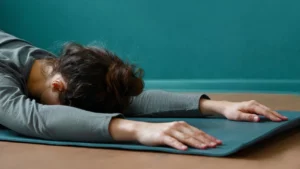For many, back pain is a constant, agonizing presence in their daily lives. It can affect everything from our ability to work to our sleep quality and even our enjoyment of life’s simplest pleasures. Yet, despite its ubiquity, effective solutions often seem elusive. With the growing body of research in physical therapy, nutrition, and holistic health, we are beginning to unlock new and effective methods for tackling back pain at its roots. In this comprehensive guide, we delve into some scientifically-backed cure for back pain to not just manage, but conquer it.
Different Cures For Back Pain
 Back pain can be a complex issue, given that its cause can vary from person to person. It’s always best to consult with a medical professional before starting any treatment plan. However, here are some general cures for back pain to relieve:
Back pain can be a complex issue, given that its cause can vary from person to person. It’s always best to consult with a medical professional before starting any treatment plan. However, here are some general cures for back pain to relieve:
Physical Therapy
Physical therapists use a variety of techniques to alleviate back pain. This could include strength and flexibility exercises, manual therapy, and education about pain and its causes. A therapist may teach you exercises to build strength in your core muscles (like the abs and lower back), which help support the spine. Physical therapists can also guide you on proper body mechanics to help prevent back pain. Such as how to sit, stand, and move in ways that keep your spine aligned and reduce strain on your back.
Regular Exercise
Regular low-impact aerobic activities can help increase strength and endurance in your back and improve muscle function. Walking, swimming, and cycling are excellent ways to get the heart pumping without causing additional strain on the back. Yoga and Pilates also have a positive effect on back pain. These disciplines focus on improving strength, flexibility, and balance, with particular attention to building strong core muscles.
Heat and Cold Therapy
Heat and cold therapies can provide significant relief from back pain. The heat helps to stimulate blood flow and relax muscles, which can reduce the feeling of pain and stiffness. You can use a heating pad, hot water bottle, or even take a hot bath. On the other hand, cold therapy reduces inflammation, a major cause of back pain, by slowing blood flow. You can use an ice pack or a package of frozen peas wrapped in a towel. Alternating between heat and cold can often provide effective pain relief.
Pain Relief Medications
Over-the-counter pain relievers, such as nonsteroidal anti-inflammatory drugs (NSAIDs) like ibuprofen, can be effective for short-term relief of back pain. In cases of more severe pain, a healthcare provider may prescribe stronger pain relievers, muscle relaxants, or even corticosteroids. It’s important to remember that while these medications can provide relief and can be a cure for back pain, still they don’t address the underlying cause of the pain and should be used as part of a comprehensive treatment plan.
Lifestyle Changes
Certain lifestyle factors can greatly influence back health. Maintaining a healthy weight reduces stress on the back muscles and spine. If you smoke, quitting can improve blood flow and oxygen to the discs in the spine, helping to prevent injury and slow disc degeneration. Ensuring your workspace is ergonomically correct can also make a big difference. This means having a chair that supports the natural curve of your spine, keeping your feet flat on the floor, and positioning your computer screen at eye level so you’re not straining your neck and back.
Mind-Body Techniques
Techniques that help calm the mind can also help alleviate back pain. Mindfulness and meditation encourage relaxation, which can ease the pain. Biofeedback is another method where you learn to control involuntary functions such as heart rate and muscle tension, which can help manage pain. Cognitive behavioral therapy (CBT) can also be useful in managing chronic back pain by teaching you new ways to perceive pain and develop coping strategies. These techniques not only help with pain but also address the anxiety and depression that can accompany chronic back pain.
Alternative Therapies
Alternative therapies offer another avenue to explore for back pain relief. Acupuncture, an ancient Chinese medicine technique, involves inserting thin needles into specific points on the body to relieve pain. Massage therapy can help to relax tense muscles and improve circulation in the back, which can provide short-term relief. Chiropractic treatment focuses on spinal manipulation to improve physical function and alleviate pain.
Sleeping Position and Mattress Quality
Your sleeping position can affect your spinal alignment, contributing to back pain. If you’re a back sleeper, try placing a pillow under your knees to maintain the normal curve of your lower back. Side sleepers can place a pillow between the knees to keep hips and spine aligned. A firm, supportive mattress can also prevent and alleviate back pain. If a new mattress isn’t an option, adding a mattress topper can provide extra support.
Posture Training
 Good posture keeps all parts of the body balanced and supported. When standing, keep your weight balanced on your feet, and don’t slouch or lean forward when seated. If you work at a desk, adjust your chair and workspace so you can sit up close to your work, with your upper body supported by the back of the chair. Avoid lifting heavy objects when possible, but if you must lift something heavy, use your legs and not your back for strength.
Good posture keeps all parts of the body balanced and supported. When standing, keep your weight balanced on your feet, and don’t slouch or lean forward when seated. If you work at a desk, adjust your chair and workspace so you can sit up close to your work, with your upper body supported by the back of the chair. Avoid lifting heavy objects when possible, but if you must lift something heavy, use your legs and not your back for strength.
Stress Management
Stress can lead to muscle tension, leading to back pain or exacerbating existing pain. Relaxation techniques like deep breathing, guided imagery, and progressive muscle relaxation can help reduce stress levels and relax your muscles. Regular exercise, getting enough sleep, and eating a healthy diet can also improve your body’s ability to handle stress.
Hydration and Nutrition
Adequate hydration keeps the discs – the gelatinous structures between the bones of your spine – healthy. Dehydration can cause these discs to become brittle and shrink, leading to pain. Eating a balanced diet rich in calcium and vitamin D is important for maintaining bone strength. Anti-inflammatory foods such as those rich in omega-3 fatty acids (like salmon and walnuts) and antioxidants (like blueberries and spinach) can also help reduce inflammation and alleviate back pain.
Surgery
Surgery is usually considered the last resort for back pain treatment and is often reserved for cases where the pain is caused by a specific physical condition like a herniated disc, spinal stenosis, or sciatica, and where conservative treatments haven’t worked. The type of surgery will depend on your specific condition. For example, a discectomy is performed to remove a herniated portion of a disk to relieve irritation and inflammation of a nerve. Spinal fusion permanently connects two or more bones in the spine to improve stability, correct a deformity, or reduce pain.
Again, these are general strategies or cure for back pain. For persistent or severe back pain, please seek the advice of a healthcare professional.
What Is The Fastest Way To Cure Back Pain?
 The fastest way to relieve back pain largely depends on the nature of the pain. Acute back pain due to strain or minor injury can often be addressed quickly, while chronic back pain may require a more long-term approach. However, here are some general suggestions to help alleviate back pain quickly:
The fastest way to relieve back pain largely depends on the nature of the pain. Acute back pain due to strain or minor injury can often be addressed quickly, while chronic back pain may require a more long-term approach. However, here are some general suggestions to help alleviate back pain quickly:
- Topical Analgesics
Over-the-counter creams, gels, or sprays can provide immediate pain relief when applied to the skin over the painful area. These products often contain ingredients like menthol, which provide a cooling sensation, or capsaicin. This can help block pain signals.
- Transcutaneous Electrical Nerve Stimulation (TENS)
This therapy involves a device that sends low-voltage electrical currents through the skin near the source of pain. It’s thought to work by interrupting the nerve signals that are causing pain, and it can provide quick relief.
- Mindfulness and Deep Breathing
These techniques can help divert your attention away from the pain, relax tense muscles, and reduce stress. The result can be immediate and noticeable pain relief.
- Hydrotherapy
Warm baths can be particularly effective for relieving lower back pain quickly. The warm water can help improve circulation and relax the muscles, while the buoyancy can take pressure off the spine.
- Compression Therapy
Wearing a back brace or compression wrap can provide immediate support and pain relief. It can also help prevent movements that may cause or worsen pain.
- Over-the-Counter Dietary Supplements
Certain dietary supplements, such as magnesium, can help relax muscles and might offer quick relief from back pain. Always consult your healthcare provider before starting any new supplement regimen.
Remember that while these methods might provide immediate relief, they don’t address the underlying cause of back pain and might not be the right cure for back pain. If your pain persists, it’s important to seek professional medical advice.
Conclusion
In conclusion, managing and cure for back pain is a multifaceted process. It involves a combination of professional treatments, at-home remedies, lifestyle modifications, and mindful practices. From physical therapy and regular exercise to alternative therapies, posture training, hydration, and nutrition, each approach plays a critical role in the journey toward recovery. It’s important to remember that while immediate relief can often be achieved, addressing the root cause of the pain is key to long-term recovery. Always consult a healthcare professional for personalized advice and treatment options for back pain.
If you’re experiencing Back pain, physical therapy for back pain at PhysioMantra can help: Book an online physical therapy session.



